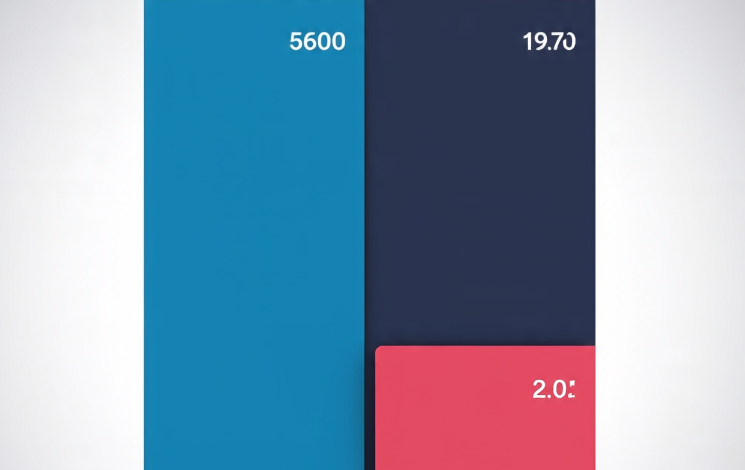PTE Score Chart: Understanding the Key to Your English Proficiency Assessment

The Pearson Test of English (PTE) is a popular English proficiency exam used for academic admissions, visa applications, and professional purposes. It evaluates a candidate’s command of the English language through various sections, including speaking, listening, reading, and writing. To understand your performance, it’s crucial to know how the PTE score chart works. This article delves into the details of the PTE score chart, explaining each section, its scoring range, and how to interpret the results effectively.
What is the PTE Exam?
The PTE Academic is designed to assess your English skills in a real-world academic context. The test is fully computer-based, providing a precise and objective assessment. It evaluates your ability to understand and communicate in English across various settings. The exam is recognized by universities, governments, and employers worldwide.
Key Components of the PTE Exam
- Speaking and Writing: This section evaluates your ability to express thoughts clearly in both spoken and written forms. You will be asked to read aloud, describe images, answer questions, and summarize written texts.
- Reading: This section tests your ability to understand written English in various formats, from academic texts to everyday materials.
- Listening: The listening section assesses your ability to understand spoken English, such as lectures, conversations, and discussions.
- PTE Score Chart: The scores you receive are based on your performance in each of these sections.
PTE Scoring System
PTE scores are reported on a scale from 10 to 90, with 10-point intervals. These scores represent your proficiency level in English and are a key factor in your application process. Here’s a breakdown of what each score range signifies:
Speaking and Writing: Scoring Insights
The Speaking and Writing section is crucial in determining your overall PTE score. The range of scores for this section is between 10 to 90, and it is weighted heavily in your final result.
- Score 10-29: Low proficiency. Communication may be unclear, with difficulty in expressing complex ideas.
- Score 30-49: Intermediate proficiency. While you can express basic thoughts, there are occasional lapses in fluency and clarity.
- Score 50-69: Competent proficiency. You can communicate effectively with some minor errors in pronunciation or grammar.
- Score 70-89: Advanced proficiency. Clear and fluent expression with minimal errors.
- Score 90: Expert level. No significant errors in speech or writing, and you demonstrate an excellent command of English.
Reading: Understanding the Scores
The Reading section tests your ability to understand written material. Here’s how the scores are interpreted:
- Score 10-29: Limited ability to understand and interpret written texts, struggles with comprehension.
- Score 30-49: Basic reading comprehension, though complex texts may be challenging.
- Score 50-69: Good reading comprehension, but occasionally misinterpreting certain elements of complex texts.
- Score 70-89: Strong reading skills with few errors in interpreting advanced academic texts.
- Score 90: Excellent comprehension of complex academic and non-academic texts.
Listening: Evaluating Your Listening Skills
The Listening section measures how well you understand spoken English. The score breakdown is similar to that of the Reading section:
- Score 10-29: Limited ability to understand spoken English in both formal and informal settings.
- Score 30-49: Basic understanding of spoken English, but challenges arise with complex vocabulary or accents.
- Score 50-69: Competent listening skills. You can understand most spoken English, but complex discussions may be difficult.
- Score 70-89: Advanced listening skills. You can follow complex conversations, lectures, and discussions with ease.
- Score 90: Excellent listening comprehension, able to understand all accents and spoken English with minimal difficulty.
PTE Score Chart Breakdown
The PTE score chart gives a detailed view of your language skills. Here’s an overview of what the score ranges generally indicate:
| Score Range | Proficiency Level | Description |
| 10-29 | Limited proficiency | Requires improvement in understanding and communicating in English. |
| 30-49 | Basic proficiency | Able to communicate in everyday situations but may struggle with complex language. |
| 50-69 | Competent proficiency | Competent in handling both familiar and unfamiliar topics with minor errors. |
| 70-89 | Advanced proficiency | High level of fluency and understanding, few to no errors in communication. |
| 90 | Expert proficiency | Excellent command of the English language. |
Why is the PTE Score Chart Important?
The PTE score chart not only reflects your proficiency level but also determines your eligibility for academic programs, visa applications, and job placements. Universities, immigration authorities, and employers often have minimum score requirements for different categories, so understanding your score can help you set realistic goals and expectations.
Tips to Improve Your PTE Score
Improving your PTE score requires focused preparation and consistent practice. Here are some tips to help you boost your score:
- Practice Regularly: Consistent practice in all four sections (speaking, reading, writing, and listening) will help build your skills over time.
- Use Official Study Materials: Official PTE practice tests and study guides are invaluable for familiarizing yourself with the exam format and question types.
- Take Mock Tests: Simulating the actual test environment with mock exams can help you become more comfortable and reduce test anxiety.
- Focus on Weak Areas: Identify your weaknesses and dedicate more time to practicing those sections where you score lower.
- Seek Professional Help: Consider taking a PTE preparation course with a tutor who can guide you and provide personalized feedback.
Conclusion
Understanding the PTE score chart is essential for knowing where you stand in terms of English proficiency. Whether you are applying for university admissions, professional opportunities, or immigration purposes, your PTE score plays a crucial role. By following the tips above and consistently working on your English skills, you can achieve the score you need to reach your goals.
FAQs
- What is the highest score on the PTE?
The highest score on the PTE exam is 90, which indicates expert proficiency in English. - How is the PTE score calculated?
The PTE score is calculated based on your performance in four sections: speaking, writing, reading, and listening. Each section is scored between 10 and 90. - Is there a passing score for PTE?
There is no fixed passing score for PTE. However, individual institutions and organizations set their own minimum score requirements. - How long is the PTE score valid?
PTE scores are valid for two years from the date of the exam. - Can I retake the PTE if I’m not satisfied with my score?
Yes, you can retake the PTE exam as many times as you like, but there must be a 5-day gap between attempts.



